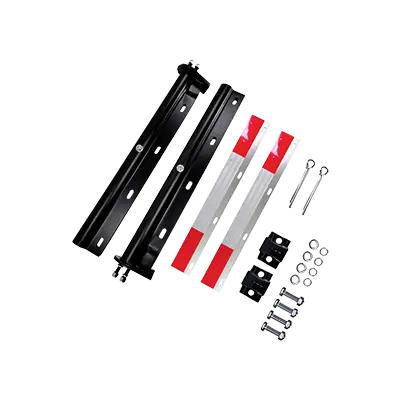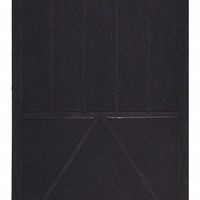Call +(254) 703 030 000 / 751 483 999 / 721 704 777
- Home
- Fleet Vehicle Maintenance
- Vehicle Accessories
- Exterior Vehicle Accessories
- Mud Flaps Accessories
Mud Flaps & Accessories
Mud flaps or splash guards are used with the fender to protect the vehicle, passengers, other vehicles, and pedestrians from mud and other flying debris thrown into the air by rotating tires. Mud flaps are typically made from a flexible material such as rubber that is not easily damaged. Accessories .....Read More
Frequently Asked Questions
What are mud flaps and what do they do?
Mud flaps, also known as splash guards or mud guards, are protective devices installed behind the wheels of vehicles, including cars, trucks, and trailers. They are typically made from flexible materials such as rubber, plastic, or metal. The primary function of mud flaps is to shield the vehicle, passengers, and other road users from debris, water, mud, and rocks that the tires might kick up while driving.
By preventing these materials from being thrown into the air, mud flaps help maintain visibility for the driver and reduce the risk of damage to the vehicle's bodywork and paint. They also protect other vehicles on the road from being hit by flying debris, which can cause chips, scratches, or even accidents. Additionally, mud flaps contribute to keeping the vehicle cleaner by minimizing the amount of dirt and grime that splashes onto the vehicle's surface.
Mud flaps are especially beneficial in adverse weather conditions, such as rain or snow, where they help reduce the spray of water and slush, improving safety for all road users. They are often required by law for larger vehicles like trucks and trailers to ensure road safety and minimize environmental impact.
In summary, mud flaps serve as a crucial component in vehicle maintenance and road safety by protecting the vehicle and others from debris, maintaining cleanliness, and ensuring better visibility and safety in various driving conditions.
How do I choose the right mud flaps for my vehicle?
1. **Vehicle Compatibility**: Ensure the mud flaps are designed for your specific vehicle make and model. Check manufacturer specifications for compatibility.
2. **Material**: Choose between rubber, plastic, or metal. Rubber is flexible and durable, plastic is lightweight and affordable, and metal offers maximum protection but can be heavy.
3. **Size and Coverage**: Select mud flaps that provide adequate coverage for your tires. Larger flaps offer more protection but may affect ground clearance.
4. **Installation**: Consider ease of installation. Some mud flaps require drilling, while others use existing holes or clips. Choose based on your comfort with installation.
5. **Design and Style**: Decide between universal or custom-fit designs. Custom-fit flaps offer a tailored look, while universal ones are more versatile.
6. **Weather Conditions**: For harsh weather, opt for heavy-duty mud flaps that can withstand extreme conditions.
7. **Off-Road vs. On-Road**: If you frequently drive off-road, choose mud flaps designed for rugged terrain. For city driving, standard flaps may suffice.
8. **Brand and Reviews**: Research brands known for quality and durability. Read customer reviews to gauge performance and satisfaction.
9. **Budget**: Determine your budget. Higher-priced mud flaps often offer better materials and longer lifespan.
10. **Legal Requirements**: Check local regulations regarding mud flaps, as some areas have specific requirements for size and placement.
11. **Aesthetic Preferences**: Consider the visual impact on your vehicle. Some mud flaps come with logos or designs that can enhance the vehicle's appearance.
12. **Warranty and Support**: Look for products with a warranty and good customer support for peace of mind.
Are mud flaps required by law?
Mud flaps, also known as splash guards, are required by law in many jurisdictions, but the specifics can vary significantly depending on the location and type of vehicle. Generally, the purpose of mud flaps is to prevent debris, water, and mud from being thrown into the air by the tires, which can pose a hazard to other vehicles and pedestrians.
In the United States, mud flap regulations are typically determined at the state level. Many states require mud flaps on commercial vehicles, such as trucks and trailers, to minimize road spray and debris. For example, states like Texas, California, and Washington have specific requirements regarding the size, placement, and material of mud flaps for certain vehicles. These regulations often specify that mud flaps must cover the full width of the tire and be positioned at a certain height above the ground.
For passenger vehicles, the requirements are generally less stringent, and in some states, mud flaps may not be required at all. However, if a vehicle is modified in a way that increases the likelihood of debris being thrown, such as lifting a truck, mud flaps might become necessary to comply with local laws.
In Canada, similar regulations exist, with provinces setting their own rules. For instance, in Alberta and British Columbia, commercial vehicles are required to have mud flaps, while passenger vehicles may not be subject to the same requirements.
In Europe, regulations can also vary by country, but the European Union has directives that member states must follow, which often include requirements for mud flaps on certain types of vehicles.
Overall, while mud flaps are commonly required for commercial vehicles, the necessity for passenger vehicles depends on local laws and vehicle modifications. It's important for vehicle owners to check the specific regulations in their area to ensure compliance.
How do I install mud flaps on my car or truck?
1. **Gather Tools and Materials**: Obtain mud flaps, a drill, drill bits, a screwdriver, a wrench, and the mounting hardware included with the mud flaps.
2. **Prepare the Vehicle**: Park on a flat surface and turn off the engine. If necessary, jack up the vehicle for better access to the wheel wells.
3. **Remove the Wheel (Optional)**: For easier access, you may remove the wheel using a lug wrench. This step is optional but recommended for a more comfortable installation.
4. **Clean the Area**: Clean the wheel well area where the mud flaps will be installed to ensure a secure fit.
5. **Position the Mud Flap**: Hold the mud flap against the wheel well to determine the best position. Ensure it covers the tire's width and aligns with the vehicle's body.
6. **Mark the Holes**: Use a marker to mark the spots where the holes will be drilled. Most mud flaps have pre-drilled holes; align these with the wheel well.
7. **Drill Holes**: Carefully drill holes at the marked spots. Use a drill bit that matches the size of the screws provided.
8. **Attach the Mud Flap**: Align the mud flap with the drilled holes and insert the screws. Use a screwdriver or wrench to tighten them securely. Ensure the mud flap is straight and properly aligned.
9. **Check Alignment**: Double-check the alignment and adjust if necessary. Ensure the mud flap does not rub against the tire.
10. **Repeat for Other Wheels**: Repeat the process for each wheel, ensuring consistency in positioning and alignment.
11. **Reattach the Wheel (If Removed)**: If you removed the wheel, reattach it using the lug wrench and lower the vehicle.
12. **Final Inspection**: Ensure all mud flaps are securely attached and properly aligned. Test drive to confirm they do not interfere with the tires.
What materials are mud flaps made from?
Mud flaps are typically made from a variety of materials, each chosen for its specific properties that suit different vehicle needs and environmental conditions. Common materials include:
1. **Rubber**: This is the most traditional material used for mud flaps. Rubber is flexible, durable, and resistant to harsh weather conditions. It effectively deflects debris and water, providing excellent protection for vehicles.
2. **Plastic**: Often made from polyethylene or polypropylene, plastic mud flaps are lightweight and resistant to corrosion. They are less flexible than rubber but can be molded into various shapes and designs, offering aesthetic versatility.
3. **Polyurethane**: Known for its durability and resistance to abrasion, polyurethane mud flaps are more flexible than plastic and can withstand extreme temperatures. They are often used in heavy-duty applications.
4. **Thermoplastic Elastomers (TPE)**: These materials combine the properties of rubber and plastic, offering flexibility, durability, and resistance to environmental factors. TPE mud flaps are often used in modern vehicles for their balance of performance and cost-effectiveness.
5. **Metal**: Some mud flaps, particularly those used in heavy-duty or off-road vehicles, incorporate metal components for added strength and durability. These may be combined with rubber or plastic to enhance flexibility while maintaining structural integrity.
6. **Composite Materials**: These are engineered materials that combine different substances to achieve specific performance characteristics. Composite mud flaps can offer enhanced strength, reduced weight, and improved resistance to wear and tear.
Each material has its advantages and is chosen based on factors like vehicle type, usage conditions, and personal preferences.
Can mud flaps improve fuel efficiency?
Yes, mud flaps can improve fuel efficiency, albeit marginally. Mud flaps are designed to reduce the amount of spray and debris kicked up by the tires, which can help in maintaining the vehicle's aerodynamics. By minimizing the turbulence and drag caused by the wheels, mud flaps can contribute to a smoother airflow around the vehicle. This reduction in aerodynamic drag can lead to improved fuel efficiency, especially at higher speeds where aerodynamic factors play a more significant role.
However, the extent of fuel efficiency improvement depends on several factors, including the design and material of the mud flaps, the type of vehicle, and driving conditions. For instance, aerodynamic mud flaps that are contoured to the shape of the vehicle and made from lightweight materials are more effective in reducing drag compared to traditional, flat mud flaps.
In addition to aerodynamic benefits, mud flaps also protect the vehicle's undercarriage and body from damage caused by road debris, which can indirectly contribute to maintaining optimal vehicle performance and efficiency over time. While the fuel savings from mud flaps alone may not be substantial, they can be part of a broader strategy to enhance vehicle efficiency, including proper tire maintenance, regular engine tune-ups, and reducing excess weight.
Overall, while mud flaps can contribute to improved fuel efficiency, they should be considered as one of many factors in a comprehensive approach to optimizing vehicle performance and fuel economy.
How do I maintain and clean mud flaps?
To maintain and clean mud flaps, follow these steps:
1. **Regular Inspection**: Check mud flaps regularly for any signs of damage, such as cracks or tears. Ensure they are securely attached to the vehicle.
2. **Cleaning**:
- **Remove Loose Dirt**: Use a hose to rinse off loose dirt and debris. Start from the top and work your way down.
- **Soap Solution**: Mix a mild detergent with water. Use a soft brush or sponge to scrub the mud flaps gently, focusing on areas with stubborn dirt or stains.
- **Rinse Thoroughly**: Rinse the mud flaps with clean water to remove soap residue. Ensure all detergent is washed away to prevent any potential damage.
3. **Drying**: Use a clean cloth or towel to dry the mud flaps. This prevents water spots and helps maintain their appearance.
4. **Conditioning**: For rubber mud flaps, apply a rubber conditioner to keep them flexible and prevent cracking. Follow the product instructions for best results.
5. **Reattachment Check**: Ensure mud flaps are securely fastened. Tighten any loose screws or bolts. Replace any damaged fasteners to prevent the mud flaps from detaching while driving.
6. **Seasonal Care**: In winter, remove salt and de-icing chemicals promptly, as they can cause corrosion. In summer, check for sun damage and fading.
7. **Storage**: If removing mud flaps for any reason, store them in a cool, dry place away from direct sunlight to prevent warping or degradation.
By following these steps, you can extend the life of your mud flaps and keep them looking and functioning well. Regular maintenance ensures they continue to protect your vehicle effectively.

